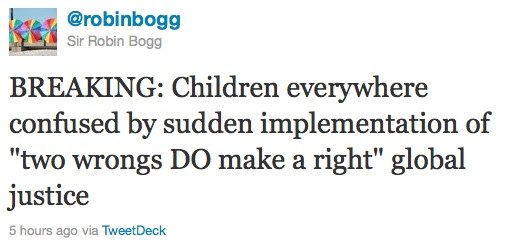
29-year-old Japanese tourist Kayo Matsuzawa was a daughter, younger sister, flatmate, friend, and if she were alive today, would have been an aunt. She went missing from Auckland, New Zealand 20 years ago today, around 11 September 1998. Her body was found in a utility cupboard in a stairwell 11 days later on 22 September.
TVNZ Cold Case‘s recent documentary is the second documentary that has been made about Kayo’s unsolved murder. Bryan Bruce’s The Investigator documentary is available on YouTube in three parts (one, two, three).
Timeline and map
- Friday 11 September 1998
- Approximately midday: Kayo arrived in Auckland on flight AN626 (a title card in Bryan Bruce’s documentary incorrectly says this was 1999).
- 2:14 pm: Security camera footage shows Kayo getting off an airport bus on Queen Street, checks into Queen Street Backpackers.
- 3:32 pm: BNZ CCTV shows Kayo walking past the Countrywide building on Queen Street.
- Access card records missing (implied in The Investigator).
- Monday 14 September 1998
- Kayo due to check out of hostel.
- Access card records missing (implied in The Investigator).
- Wednesday 16 September 1998 (reported as five days after Kayo went missing)
- Kayo’s day bag, passport, and insurance papers found in rubbish bin.
- Tuesday 22 September 1998
- Kayo’s body found.
- One person of interest leaves the country.

Kayo
Kayo’s family were worried about her going to New Zealand. Her plan was to learn English here for a year, and she left Yamagata, Japan for New Zealand in November 1997. In Christchurch she enrolled at the Dominion English School. She also worked in a restaurant.
At the school she met her friend Naomi Saishu who she flatted and travelled New Zealand with, including visiting Queenstown. “She was such a happy cheerful person; never said a bad word about anyone.“ “We’d go shopping together and to any events that were on in Christchurch. We went to the Santa parade and got so sunburnt a friend said she had never seen such dark Japanese people before.”

Kayo sent postcards back home regularly. Around August she sent her mother a postcard: “Dear mum. Happy birthday! I’ve decided to come home to Japan on November 4, so another three months to go … Take care. Love, Kayo.“
Kayo’s mother said that: “she had a lot of friends and she’d make anyone around her happy. I can’t describe how kind and nice she was” “she was very friendly and she talked to most people, she wasn’t shy about meeting new people.”
Kayo told Naomi about her plans to travel the North Island. She wanted to visit the Bay of Islands for five days, and visit Auckland. Naomi couldn’t afford to go with her. Kayo promised to send her a postcard.
In The Investigator documentary, Bryan Bruce says that “Kayo didn’t like travelling on her own” and a Police officer described her as a “young, wary … tourist”.
But Kayo’s mother, Humiko Matsuzawa, said the following to Bryan Bruce after being asked about naïvety:
Bryan: “In English we have a word: ‘naïve’, it means to be so innocent that you do not appreciate that people could be actually meaning you harm; that she would take people as we say, on face value, she would tend to trust people.”
Humiko (through a translator): “Mmm that’s right, she would never mistrust a person.”
Naomi said: “she was the kind of person who would make friends with anyone. It wouldn’t be an issue for her to make friends at the backpackers and go out with people she just met. I think that this could be the reason this happened.” “After 10 days, no postcard came, so I did start to wonder. The police showed up at my work and drove me to the station, that’s where they told me, but I already knew by then, it must be Kayo.”
Other friends described her as kind, said she could speak English very well, and reported that she didn’t take drugs.
One postcard she sent from New Zealand to her brother, Junichi Matsuzawa, read: “Thank you so much for your support when I left. It’s much colder here than expected. But it’s such a beautiful place. Everyone here is so kind, I will probably not get killed. I’d better get going now. Please don’t do too much overtime at work, and take good care of yourself”.
Queen Street backpackers
Kayo arrived in Auckland city by bus at around 2:14pm.
Kayo paid for and checked into a single room on the second floor of Queen Street Backpackers (4 Fort Street) for three nights on 11 September. She spoke to staff and set up her room in a neat, orderly fashion. Then she left her room for what was likely the last time.
At the time, there was a travel centre across the road.
She was last photographed on CCTV at 3:32pm walking past the Countrywide building on Queen Street.
The 11 September was a Friday afternoon, and soon people would be on Queen Street making their way home, or having drinks after work.
The fire alarm tester
Dennis Groves was a fire alarm compliance tester, who on 22 September had just finished servicing the system at the Auckland City Library, then went to the Centrecourt building’s utility room where the fire panel was.
He discovered Kayo’s body.
He told Cold Case “the first smell that I was aware of was the smell of ammonia, then it became a real vile smell”. At first he thought Kayo’s naked body was a mannequin. He went down the stairs to Queen Street and used his phone to call the police. He said “I had a darn good look at the body because I thought I might be called as a witness later on”.
The buildings
The Centrecourt building in Central Auckland at 131 Queen Street is six storeys high. It shares a stairwell with the old BNZ building beside it.
From the backpackers, turning right then turning left onto Queen Street off of Fort Street brings you to the Centrecourt building after a two-minute walk.
The primary tenant in the Centrecourt building was KEY Education, an English language school with mainly Asian students, on the second floor. In The Investigator it’s described as a Japanese language school.
The shared stairwell is a confusing maze of stairs and doors. There was access to it from a car park, the Centrecourt food court, QF Tavern – a bar/pub, and presumably each floor in the Centrecourt and BNZ buildings.
The Centrecourt car park was accessible from a roller door entrance around the back of the building, on Mills Lane.

From the car park there are lifts that go up through the building and the stairwell. Down one flight of stairs is the corridor where the utility room is, and there’s another car park one level down. The door on the left of the utility room corridor is the fire exit stairwell for the BNZ building.
From the BNZ stairwell down one floor is an exit to Queen Street. Bryan Bruce points out there is an alarm PIR beside this door, but it’s unclear if it was there in 1998 or at what times it was armed. Down one floor is a door to the BNZ food court. Up one floor is the BNZ car park and then other BNZ tower floors.
The utility room
Kayo hadn’t been reported missing when her body was found. Kayo’s fingerprints were matched to fingerprints on her belongings left in her hostel room. Dental records from Japan and in person family identification were also used.
Kayo’s cause of death remains unknown because of the time that passed between her death and her body being found.
The room Kayo was found in has been described in various ways. An “alarm room”, probably because there was writing on the door that the “fire alarm panel” was in the room. It’s probably also accurately described as a “small utility room” (Cold Case), or a stairwell cupboard. It may have been a room that firefighters would need to access if they were called to the building.

The room could be opened easily using a screwdriver, and that’s how Dennis gained access, as the building manager was difficult to find and keys were not given out readily. The door to the room was designated a smoke control door, and had an auto-closer on it. When Bryan Bruce was filming his documentary nine years later there was no way to hold the door open without using another item.

The room was dark and the light switch was in an unusual location.
Bryan Bruce notes that the room was chosen by the murderer over potentially more discreet methods of hiding Kayo’s body, for example using a vehicle parked in the attached car park to transport the body to another location. He uses this to support his theory that the person did not have access to a vehicle. It’s possible that they did have access to a vehicle, but saw moving the body as a risk, either because they might have been seen in the car park, pulled over with the body in their vehicle, or left forensic evidence behind in their vehicle. They chose not to move the body even though it’s likely they returned to the room to clean up (building access records were missing for two periods of time, and some of Kayo’s belongings were disposed of days later).
There were probably rubbish bins in the building that they also chose not to use, a roof area, or even moving Kayo’s body from the building in a suitcase or other container. Kayo only weighed 50kg or 110 pounds.
Theory: building access
The original investigation appears to have focused on who had access to the buildings connected to the stairwell, and checking their alibis. This numbered in the hundreds of people who worked across the two buildings. As well as controlled access, including from the building car park, which was controlled by DKS (Data Key System) key access, the stairwell was accessible to the public via the Centrecourt food court/foodhall, and the QF Tavern – a bar/pub on the street.
“Centrecourt tenants reported that people often accessed the stairwell without a swipe card. Toilets and public areas were messy after the weekends, and the bar downstairs had a fire exit into the stairwell where patrons went to smoke. Police want to hear from anyone who was in the Centrecourt building over the time Kayo went missing and noticed anything unusual.” (Cold Case)
This was Bryan Bruce’s theory in his documentary, stating “the murderer must have had security access to the building“. The Mills Lane car park was described as “one of two ways you can get in[to the building]”. A DKS key was required to enter or exit using the car park roller door.
One part of the investigation that was not mentioned in the Cold Case documentary was the missing building access records.
Some of the doors to the Centrecourt and BNZ buildings were controlled by DKS and Cardax access control systems. Access control records for each system are stored in two separate physical locations across both buildings. Records for certain times on the weekend that Kayo was murdered are missing. One of the computers is hidden away in another utility cupboard in the Centrecourt building. The other Cardax system’s computer is in the BNZ Tower Management office. The Cardax system prints paper records that were also missing. The Investigator implies the dates that records are missing are Friday 11 September 1998 and Monday 14 September 1998.
DNA
Police revealed on August 2018’s episode of Cold Case that using Y-STR DNA testing they had found male DNA under Kayo’s fingernails. Police would be able to compare it to a DNA sample taken from a male suspect.
People of interest
Fire alarm tester
Dennis, the fire alarm tester was initially a person of interest, but was ruled out by Police. His movements as part of his job were electronically monitored.
Language school associate
One person of interest was associated with the Centrecourt language school. The timings of their alibi didn’t check out, but the Police later concluded that this was due to an honest mistake.
British serial killer
Around 2000 it was reported that Alan Michael Grimson, who in 2001 was convicted of killing two young men in England, was based at the Devonport Naval Base fire school in Auckland, New Zealand as a trainer at the time of Kayo’s murder.
Graham Osborne, manager of the fire alarm maintenance company responsible for the Centrecourt building, Wormald, said he had met Grimson a few times at the fire school, but that there was no reason for Grimson to have known about the Centrecourt building.
Detective Senior Sergeant Kevin Baker observed that Grimson appeared to have targeted young men. Police suspect that Grimson trawled nightclubs for victims, and that there are more, unknown victims who may have been murdered on December 12 of various years.
Ukrainian backpacker resident
Another person of interest was a Ukrainian man who was a long-term resident at the Queen Street Backpackers. He was described as eccentric, paranoid, and with a mental health history.
He matched a description that a witness gave that they saw an older chap with a dishevelled look walking with an Asian female. The witness thought the Asian female could have been Kayo. This man left the country on the day Kayo’s body was found. He dealt in second-hand jewellery, and had pawned jewellery in Australia that matched the description of Kayo’s missing jewellery. Police say they tracked down the jewellery that he pawned and conclusively eliminated it as being Kayo’s jewellery.
Two years later he was found by French police squatting in an airport and triggered an INTERPOL alert. He was extradited back to NZ and an officer spent two days interviewing him. The officer explains why the man was ruled out: “my gut instinct is that it wasn’t him… a guy with a clear mental health history… was he the kind of person who would have been able to approach Kayo, strike up a conversation and entice her into the stairwell?”
Newest suspect
Around 2018 another district advised Auckland Police of a potential person of interest. The district is not necessarily in New Zealand. Police say that he “looks really good” as a suspect. Bank records show that this person used their EFTPOS or ATM card at the Queen Street’s BNZ building ATM on the same afternoon that Kayo arrived. From the emphasis placed on it in the Cold Case documentary, it’s likely this person’s previous offending has involved spiking the drinks of their victims.
Clothing and belongings

Security camera footage shows that Kayo was wearing black bootleg pants, a black jacket, black shoes, and a backpack. Her clothing as well as her jewellery (small silver crescent-shaped earrings and a small delicate gold band ring with a single pink stone) has not been found.

Five days after Kayo went missing, which would have been around Wednesday 16 September 1998, some of Kayo’s possessions (including her day bag, passport, and insurance papers) were found in a public rubbish bin on the corner of Albert Street and Swanson Street by a rubbish collector. The bins in the central city are emptied two to three times a day.

In the Cold Case documentary the series of events were described as: the rubbish collector emptied the contents of the rubbish bin into a truck, property spilled out including Kayo’s purse and passport, the collector took the passport back to the office where it sat before reports of Kayo’s homicide hit the media. An office administrator contacted Police after media reported an unidentified body being found.
In Bryan Bruce’s documentary, The Investigator, the rubbish collector was described as finding Kayo’s passport and insurance-type papers, and taking them home, then Police were contacted after media reported an unidentified body was found.
No additional fingerprints were found on the passport.
As a result of this information, the Police spent approximately two weeks sifting through the rubbish at Greenmount Landfill, East Tamaki.

Theory: drink spiking
The primary theory Police seem to be pursuing now is that Kayo’s drink was spiked.
In the Police’s opinion though, she wasn’t a drinker of alcoholic drinks. Her friend Naomi said “she could only drink a small amount, she couldn’t even finish a bottle of beer. It’s hard to imagine she’d be willing to drink unless someone forced her.” However, in Bryan Bruce’s documentary the following conversation occurred with Kayo’s friends:
“Voiceover: Did Kayo always stick to the rules? Did she take drugs for example? No, say her friends. But she did like to have a drink.
Friend: [Describing a photograph] We are sharing a liquor. And only a few glasses makes her drunken. And Kayo was so attractive cute lady so she was quite popular among men. And she can speak to everybody because her English capability is quite good. And in addition to it she was a good dancer.”
Taking into account both statements, a sound conclusion to draw would probably be that Kayo would have been unlikely to visit a bar, like the one attached to the Centrecourt building, unless she was with someone else.
Kayo had just arrived off a midday flight – it’s possible she went to the Centrecourt food court for a late lunch. The building was advertised as having a ‘international foodhall’ and an observation deck. It’s less likely, but still possible that her drink or food was spiked there.

At some point Kayo ends up in the Centrecourt stairwell, probably sometime that evening. People would be less likely to be leaving work via the stairwell after 5:30pm or 6:00pm. But later into the night the stairwell turned into the place for patrons from QF Tavern to smoke.
Profile
The suspect has been described as:
- having the confidence to go back to the scene,
- being confident or comfortable enough to approach a tourist, possibly someone around Kayo’s age, someone she was comfortable enough to stay with for one or two hours, and someone who looked trustworthy (on the other hand, drink spiking may mean this isn’t as important),
- forensically aware – there were no fingerprints on the belongings found in the rubbish bin, and apart from under Kayo’s fingernails, no DNA was found,
- someone who has probably been involved in an act like this before,
- being premeditated, and
- having a sexual connotation behind their offending.
Can you help?
People, including tourists visiting Auckland, who were 20 in 1998 and might have been visiting the QF Tavern or otherwise been on Queen Street on or around 11 September 1998 would be around 40-years-old now.
Kayo’s murder is one of 65 cold case murders in New Zealand and was revisited by the documentary series Cold Case. Police would like to hear from anyone with information on 0800 COLD CASE (0800 2653 2273). You can also call the Auckland Police on +64 9 302 6400 from overseas, visit their website, or visit the Cold Case Facebook page.











































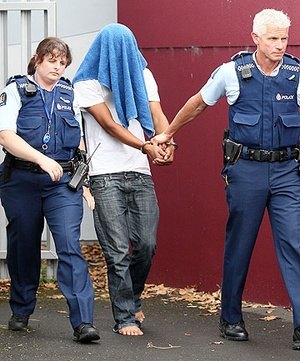
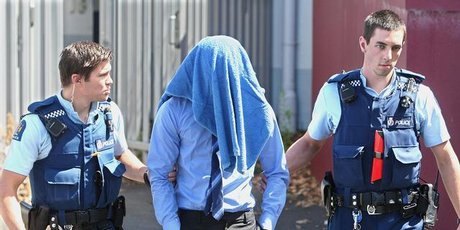


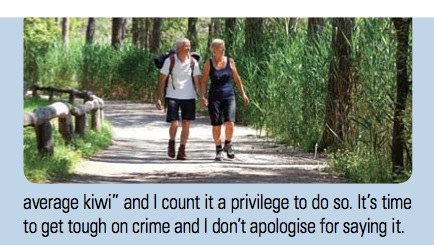 Conservative Party image
Conservative Party image
 Conservative Party image
Conservative Party image

 ACT Party image
ACT Party image Terrace 139 Creative
Terrace 139 Creative ACT Party image
ACT Party image
 ACT Party image (you’d think they’d actually use a New Zealander)
ACT Party image (you’d think they’d actually use a New Zealander)
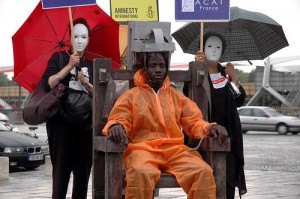 The death penalty is nothing new but it caught my eye because of Osama Bin Laden
The death penalty is nothing new but it caught my eye because of Osama Bin Laden 